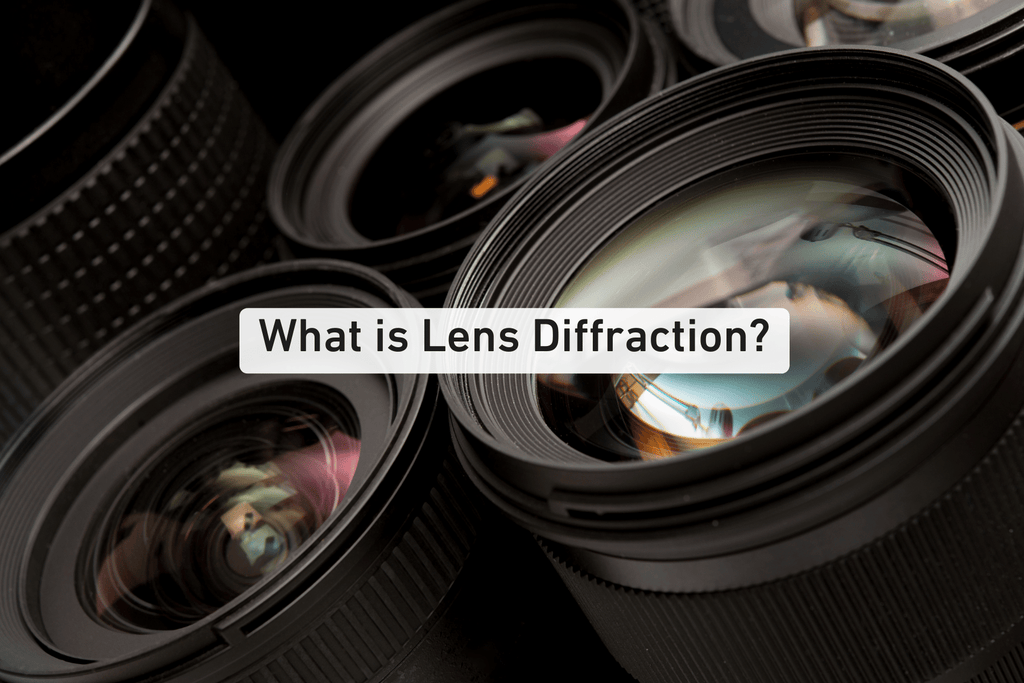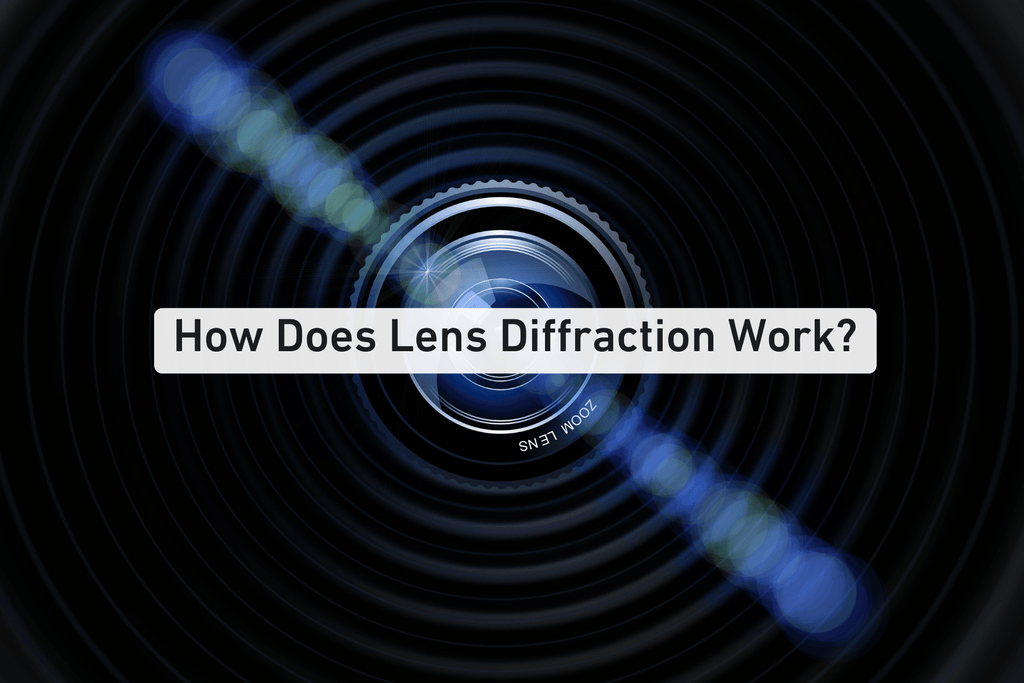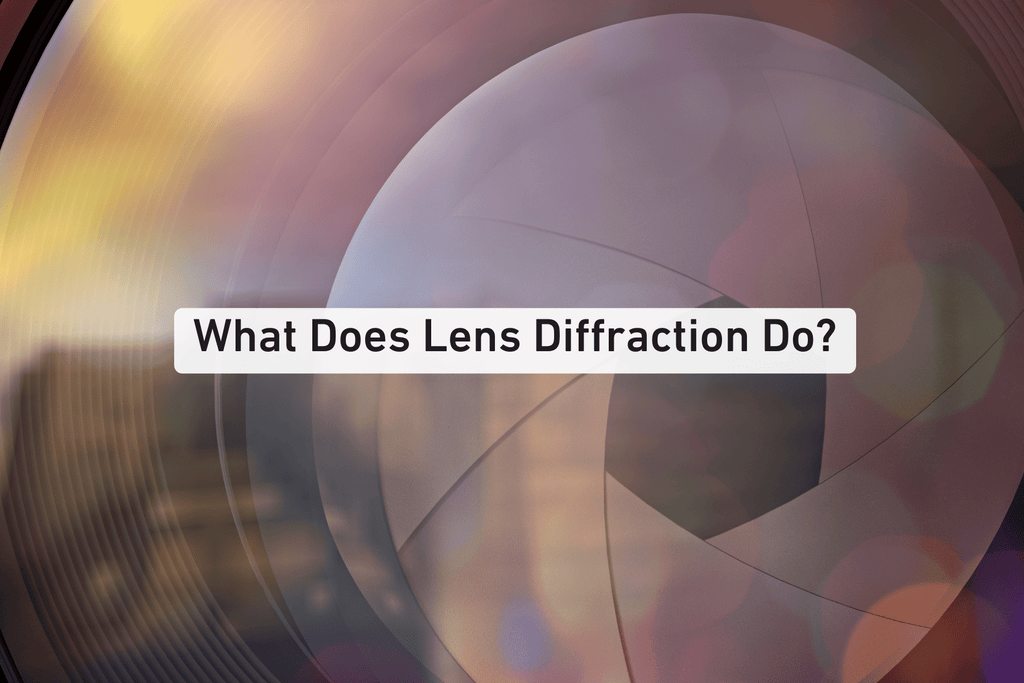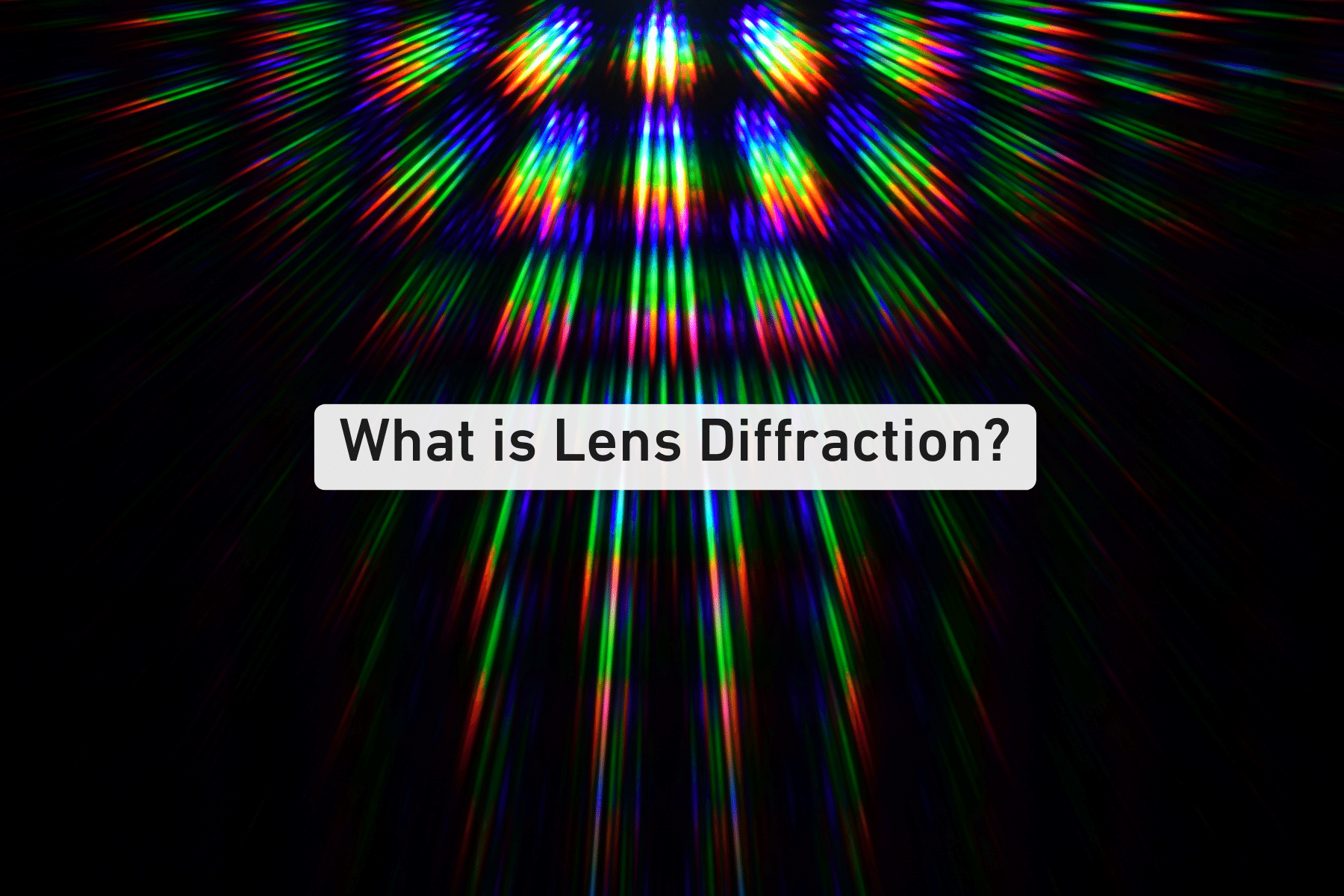Picture this: your camera is like a curious eye, always ready to capture the world's beauty, and the lens is its magical glasses. But even magic glasses have quirks, which brings us to the spellbinding phenomenon known as lens diffraction.
It's a little trick of the light that can change how your photos look, for better or worse. So, grab your camera, and let's dive into this fascinating aspect of photography that could be the secret to turning your good photos into great ones!
In this blog, we'll look into the following:
- What is lens diffraction?
- How does lens diffraction work?
- What does lens diffraction do?
- How lens diffraction impacts your photos.
- What to aim for?
- What to avoid?

What is Lens Diffraction?
You'll have to begin by picturing light as little particles zooming around through space. Now, when this zooming space light enters through your aperture (the hole in your lens), something pretty fascinating happens because of the glass elements – it's called diffraction!
Think of it this way: diffraction scatters light as it passes through the aperture, like when you spill water, and it goes all over the place. The glass in the lens actually dispenses the light, allowing it to cover the sensor.

How Does Lens Diffraction Work?
Imagine your lens' aperture like a magical doorway. When you swing the door open (that's widening the aperture), lots of light gets inside, making your pictures brighter, like sunshine flooding a room. But when you close the door tight (or narrow the aperture), less light can sneak in, making your photos darker, like turning off the lights at night.
Now, think about little waves of light trying to squeeze through this doorway. As the doorway gets smaller, these waves have to squish and turn to fit through the tiny opening, like when you try to push too many toys through a small door. This squishing and turning of light waves is what we call diffraction – a magic trick for your camera!

What Does Lens Diffraction Do?
It significantly affects how clear/sharp your photos turn out. This is especially true when you adjust the size of the aperture by manipulating the f/stop – classic photo 101 stuff, but it is essential to remind ourselves of… When you use a wider aperture, like f/2.8, for example, it's like opening a big window, which will let lots of light into your house. This makes your pictures clear and sharp, but the trade-off is that only a tiny part of the picture is in focus.
On the other side of that coin, if you use a restricted aperture, like f/16 or f/22, it's like peeking through a tiny hole – not as much light gets in. It might go against everything you've been taught, but even though small apertures are supposed to make pictures sharper, they can actually make them less sharp due to this whacky thing we're talking about called lens diffraction. It's like trying to see through a tiny crack in the door – things might not look as clear as they would if you opened it wide.

How Lens Diffraction Impacts Your Photos
Getting the Picture Right
Make sure your photos are clear and have the proper focus. Knowing how lens diffraction works helps you choose the best setting for your camera's eye.
Capturing Big Scenes
You want everything to look super detailed when taking pictures of prominent outdoor places, like mountains or forests. Sometimes, using smaller openings in your lens (that's higher f-numbers) is the right idea to get everything in focus. But watch out! Those small openings might make your photos less clear because of diffraction.
Snapping People's Smiles
When taking pictures of your friends or family, you usually want them to be the show's star. That means having an excellent, blurry background while they stay sharp. To get that effect, you'd use a big opening in your lens aperture (lower f-numbers). But be careful not to make it too big, or some parts of the picture might become blurry. It's like trying to photograph your friend, but the background steals the spotlight!
Related article: How to Take a Photo With a Blurred Background?
What to Aim For
Finding the Perfect Picture Place
Did you know every camera lens has a secret spot where it takes the best pictures? It's called the "sweet spot." Try out different size openings in your camera to find this magical spot that makes your pictures super clear and excellent.
Making Tough Choices
Taking great pictures sometimes means making tough decisions. You might have to choose between focusing on everything or ensuring your pictures are sharp. It's like deciding between having all your favorite toys or having the best dessert – sometimes you can't have both!
Practice Makes Perfect
Want to be a photo pro? The best way to understand your camera's work is by trying it out! Spend time playing with different settings in different places to see how they change your pictures. It's like being a scientist.
What to Avoid
Stay Away from Big Jumps
Try to use only super big or tiny openings in your camera if you need to make a particular picture. These extreme openings can worsen your pictures because lens diffraction messes things up.
Creativity is Key
Being creative is the glue that makes all this technical stuff worth knowing. The most important thing is to take pictures that make people go, "Wow!" So, don't worry too much about technically getting everything perfect – just have fun snapping those incredible shots.
Look at the Big Picture
Lens diffraction is just one small part of the clarity game when making great photos. There are other things to always consider, too. Making sure your camera is focused right, using a good lens, and keeping your camera steady are all more important things than stressing about lens diffraction. It's like making a tasty cake – you need all the right ingredients, not just the frosting.
Conclusion
Hooray, excellent photographers! You've finished your adventure learning about lens diffraction! Now that you know more, you can better use your camera's settings to take amazing pictures showing your fantastic ideas and style. Keep trying new things, playing around, and snapping those incredible shots of the world!
Related article: Understanding Lens Aberrations: How to Correct and Embrace Them
Related article: RAW vs. JPEG: What is Better in Photography?
Related article: What is Noise in Photography?
Related article: What is the Exposure Triangle — Aperture, ISO & Shutter Speed
Related article: The Psychology of Photography












